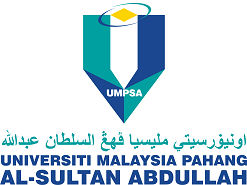Effect of Temperature Distribution on Predicting Quality Of Microwave Dehydrated Food
DOI:
https://doi.org/10.15282/jmes.5.2013.2.0053Keywords:
Food drying; temperature distribution; texture; colour; quality predictionAbstract
During food drying, many other changes occur simultaneously, resulting in an improved overall quality. Among the quality attributes, the structure and its corresponding color influence directly or indirectly other properties of food. In addition, these quality attributes are affected by process conditions, material components and the raw structure of the foodstuff. In this work, the temperature distribution within food materials during microwave drying has been taken into consideration to observe its role in color modification. In order to determine the temperature distribution of microwave-dried food (apple), a thermal imaging camera has been used. The image acquired from the digital camera has been analysed using image J software in order to get the color change of fresh and dried apple. The results show that temperature distribution plays an important role in determining the quality of the food. The thermal imaging camera was deployed to observe the temperature distribution within food materials during drying. It is clearly observed from the higher value of (ERGB =102) and the uneven color change that uneven temperature distribution can influence customer perceptions of the quality of dried food. Simulation of a mathematical model of temperature distribution during microwave drying can make it possible to predict the colour and texture of the microwaved food.
References
Aguilera, J. M., & Stanley, D. W. (1999). Microstructural principles of food processing and engineering: Maryland: Kluwer Company.
Barati, E., & Esfahani, J. A. (2012). Mathematical simulation of convective drying: Spatially distributed temperature and moisture in carrot slab. International Journal of Thermal Sciences, 56, 86-94.
Chandra, R., Singh, S. P., & Gupta, K. (1999). Damping studies in fiber-reinforced composites–a review. Composite structures, 46(1), 41-51.
Chou, S. K., & Chua, K. J. (2001). New hybrid drying technologies for heat sensitive foodstuffs. Trends in Food Science & Technology, 12(10), 359-369.
Halder, A., Dhall, A., & Datta, A. K. (2011). Modeling transport in porous media with phase change: Applications to food processing. Journal of Heat Transfer, 133(3), 031010.
Joardder, M. U. H., Kumar, C., & Karim, A. (2013). Effect of moisture and temperature distribution on dried food microstucture and porosity. Paper presented at the Proceedings of From Model Foods to Food Models: The DREAM Project International Conference.
Karim, M. A., & Hawlader, M. N. A. (2005). Mathematical modelling and experimental investigation of tropical fruits drying. International Journal of Heat and Mass Transfer, 48(23), 4914-4925.
Kumar, C., Karim, A., Joardder, M. U. H., & Miller, G. (2012). Modeling heat and mass transfer process during convection drying of fruit. Paper presented at the The 4th International Conference on Computational Methods (ICCM2012).
Maskan, A., Kaya, S., & Maskan, M. (2002). Effect of concentration and drying processes on color change of grape juice and leather (pestil). Journal of Food Engineering, 54(1), 75-80.
Mohammadi, A., Rafiee, S., Emam-Djomeh, Z., & Keyhani, A. (2008). Kinetic models for colour changes in kiwifruit slices during hot air drying. World Journal of Agricultural Sciences, 4(4).
Orsat, V., Yang, W., Changrue, V., & Raghavan, G. (2007). Microwave-assisted drying of biomaterials. Food and Bioproducts Processing, 85(3), 255-263.
Paulus, I., & Schrevens, E. (1999). Evaluating and modelling the size classification of apples. Journal of agricultural engineering research, 74(4), 411-419.
Peng, Y., & Lu, R. (2006). Improving apple fruit firmness predictions by effective correction of multispectral scattering images. Postharvest biology and technology, 41(3), 266-274.
Perera, C. O. (2005). Selected quality attributes of dried foods. Drying Technology, 23(4), 717-730.
Rahman, M. S. (2009). Food stability beyond water activity and glass transtion: Macro-micro region concept in the state diagram. International Journal of Food Properties, 12(4), 726-740.
Rakesh, V., Seo, Y., Datta, A. K., McCarthy, K. L., & McCarthy, M. J. (2010). Heat transfer during microwave combination heating: Computational modeling and mri experiments. AIChE journal, 56(9), 2468-2478.
Reeve, R. (1970). Relationships of histological structure to texture of fresh and processed fruits and vegetables. Journal of texture studies, 1(3), 247-284.
Romano, G., Argyropoulos, D., Nagle, M., Khan, M., & Müller, J. (2012). Combination of digital images and laser light to predict moisture content and color of bell pepper simultaneously during drying. Journal of Food Engineering, 109(3), 438-448.
Wang, W., & Chen, G. (2003). Numerical investigation on dielectric material assisted microwave freeze-drying of aqueous mannitol solution. Drying Technology, 21(6), 995-1017.
Wilkinson, C., Dijksterhuis, G., & Minekus, M. (2000). From food structure to texture. Trends in Food Science & Technology, 11(12), 442-450.






